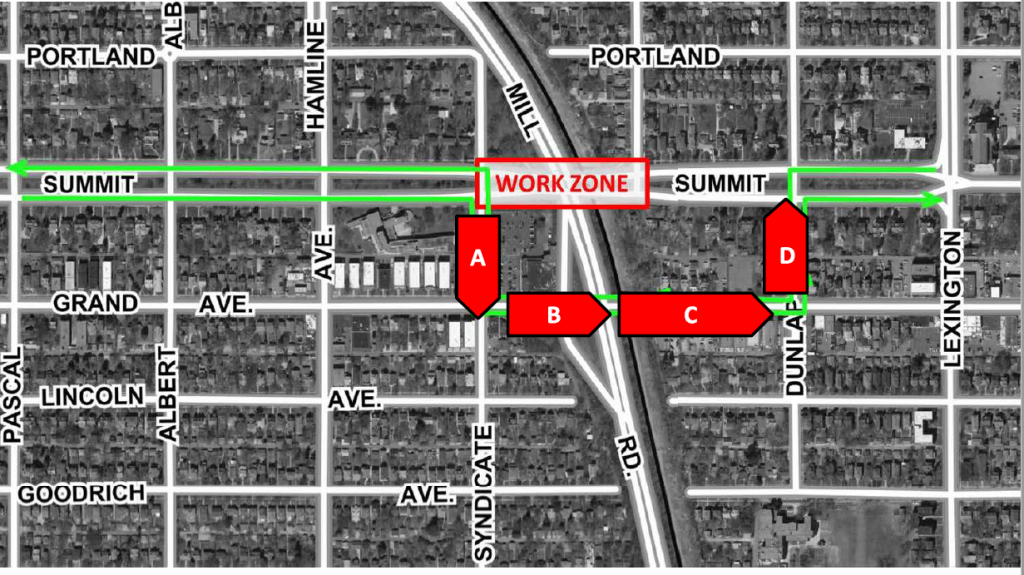A Minor Miracle in St. Paul
I have been known to harshly criticize St. Paul for its consistent—one could say unconscious, institutional—prioritization of car speed and convenience over the safety and comfort of people traveling sustainably.
But this past fall St. Paul did something incredible, illuminating how different things could be with nothing more than a change in mindset.
A two block detour onto Grand via Syndicate and Dunlap, or a new paradigm for sustainable transportation infrastructure improvement?
In October, St. Paul implemented what I believe to be the city’s most luxurious on-street separated bike infrastructure on a two block stretch of Grand Avenue, seemingly overnight. It did it without years of public sentiment testing about the exact alignment, implementation, or color of the pavement; handwringing about car convenience; or the seemingly inevitable scaling back based on unfounded fears from loud voices.
This bike infrastructure virtually has it all: parking protected AND buffered, clear signage for bikeway connections (such as they are: back to Summit once the detour ends), and maybe most importantly, a sense while riding on it that the City actually cares about your comfort and well-being as a road user. It installed it with a minimum of inconvenience to automobile traffic, and even maintained Grand’s publicly-subsidized street parking. St. Paul seems to have accomplished the impossible.
An image of the new, hopefully permanent and soon to be improved and extended, Grand Avenue Bikeway
With this detour, St. Paul has inadvertently demonstrated that Grand Ave. can support this bike infrastructure. Instead of this bikeway disappearing when the construction on Summit ends, the City should be planning to give more of Grand Avenue this treatment. This bikeway is a proof of concept, and there is no evidence the concept should be abandoned.
Certainly there are ways it can be improved from the perspective of a variety of road users. For example, Kowalski’s shouldn’t have two curb cuts on Grand—its vehicle entrance and exits should be routed to and from Syndicate. And the physical separation between car lanes and bike lanes could be upgraded (anecdotally it seems St. Paul has decided not even to replace bollards destroyed by cars—a re-emergence of the malign neglect cycling road users are more accustomed to from the City).
But in implementing this detour, St. Paul demonstrated a different model for transportation infrastructure reprioritization that our cities need to meet their climate goals and to promote and prioritize sustainable transportation choices. Implement and iterate; don’t let what should be policy-driven engineering choices instead be driven by speculation and reflexive public clamor arising from dependency on the status quo. Actually prioritize cyclist safety and comfort, rather than just paint a stripe and call it infrastructure.
This bikeway, and the method of its implementation, are both ideas that should be improved on and more fully realized, not erased and forgotten in favor of a self-fulfilling story of history that Grand Avenue and other St. Paul roadways can’t accommodate quality bike infrastructure. Either you make a policy decision to escape the car-dependent status quo and you resolve to find a meaningful path away from it by not being perpetually dragged back to it by the comfort of familiarity, or you effectively have a pro-status-quo policy with feel-good aspirations.
About the Author
Christa Moseng does law stuff, rides bikes, and paints murals. A board member of Streets.mn, Christa is also the administrator of https://mspsocial.net, a member of Hourcar and Nice Ride, and customer of Freewheel Bike and The Hub Bike Co-op.





How a passionate group of locals cracked Nanaimo’s stubborn parking rules—and unlocked new possibilities for housing and community.